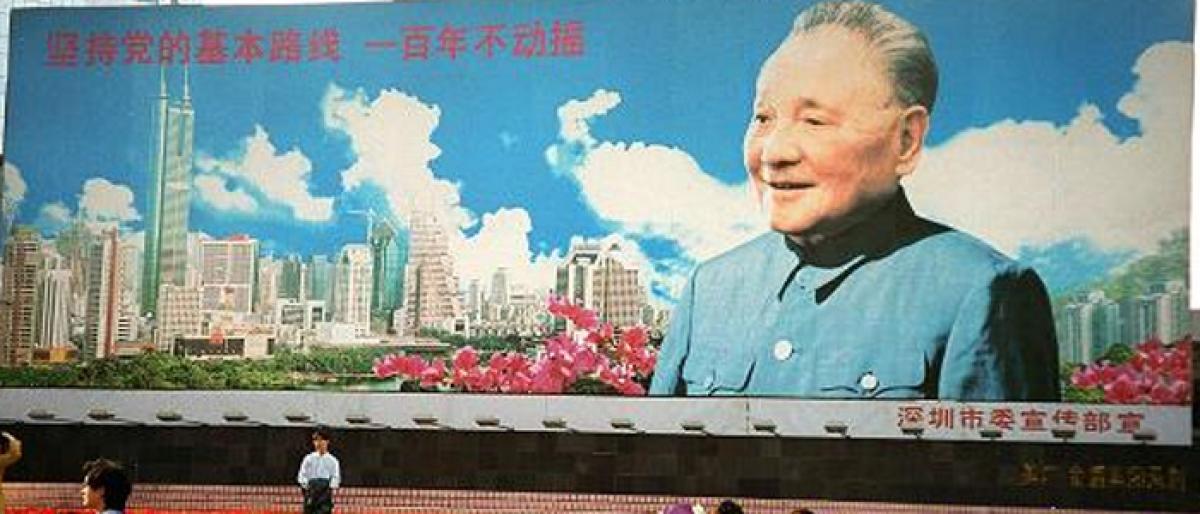Live
- 10 gunmen killed in fighting in West Bank: Israel
- AAP volunteers' passion differentiates them from other parties: Punjab CM
- Foundations of India stand at threshold of 'destruction': Priyanka Gandhi
- India among top countries in artificial intelligence adoption
- The Must-Have Denim Fits For The Season
- Fire Service Week farewell program held at Anantapur
- Manage Your Liver Health and Boost Your Energy
- District SP conducts surprise inspection at Karnataka Border Check Post
- YSRCP has shown what good governance means in 58 months: CM
- Summer skincare secrets: Protect your skin from sun and heat
Just In

The Chinese economic reform refers to the program of economic reforms termed \"Socialism with Chinese characteristics\" in the People\'s Republic of China (PRC) that was started in December 1978 by reformists within the Communist Party of China, led by Deng Xiaoping.
The Chinese economic reform refers to the program of economic reforms termed "Socialism with Chinese characteristics" in the People's Republic of China (PRC) that was started in December 1978 by reformists within the Communist Party of China, led by Deng Xiaoping.
China had been one of the world's largest and most advanced economies prior to the nineteenth century. In the 18th century, Adam Smith claimed China had long been one of the richest, that is, one of the most fertile, best cultivated, most industrious, most prosperous and most urbanized countries in the world. The economy stagnated beginning in the 16th century and even declined in absolute terms in the nineteenth and much of the twentieth century, with a brief recovery in the 1930s.
Economic reforms introducing market principles began in 1978 and were carried out in two stages. The first stage, in the late 1970s and early 1980s, involved the decollectivization of agriculture, the opening up of the country to foreign investment, and permission for entrepreneurs to start businesses. However, most industry remained state-owned. The second stage of reform, in the late 1980s and 1990s, involved the privatization and contracting out of much state-owned industry and the lifting of price controls, protectionist policies, and regulations, although state monopolies in sectors such as banking and petroleum remained.
The private sector grew remarkably, accounting for as much as 70 percent of China's gross domestic product by 2005. From 1978 until 2013, unprecedented growth occurred, with the economy increasing by 9.5% a year. The conservative Hu-Wen Administration more heavily regulated and controlled the economy after 2005, reversing some reforms.
The success of China's economic policies and the manner of their implementation has resulted in immense changes in Chinese society. Large-scale government planning programs alongside market characteristics have greatly decreased poverty, while incomes and income inequality have increased, leading to a backlash led by the New Left.
In the academic scene, scholars have debated the reason for the success of the Chinese "dual-track" economy, and have compared them to attempts to reform socialism in the Eastern Bloc and the Soviet Union; as well as the growth of other developing economies. Additionally, these series of reforms have led to Chinas rise as a world power and a shift of international geopolitical interests in favour of it over Taiwan.
During the 1930s, China developed a modern industrial sector, which stimulated modest but significant economic growth. Before the collapse of international trade that followed the onset of the Great Depression, China’s share of world trade and its ratio of foreign trade to GDP achieved levels that were not regained for over sixty years.

© 2024 Hyderabad Media House Limited/The Hans India. All rights reserved. Powered by hocalwire.com







